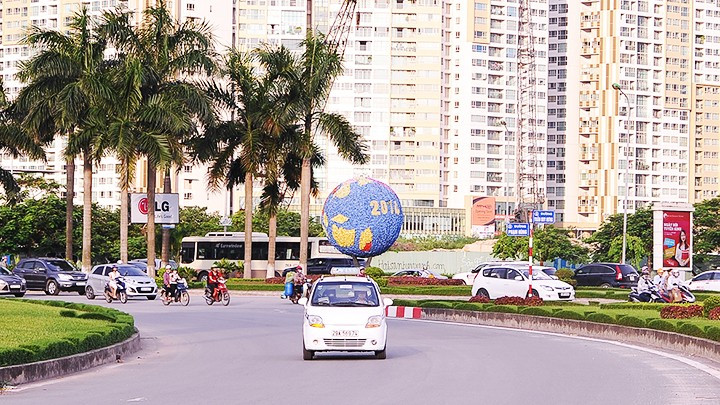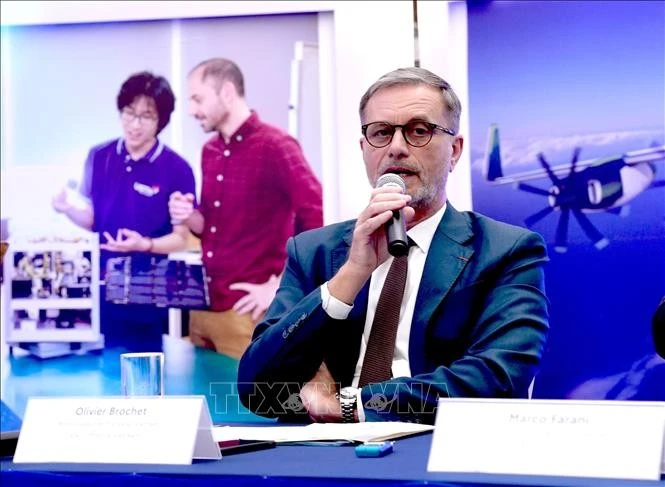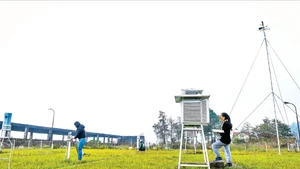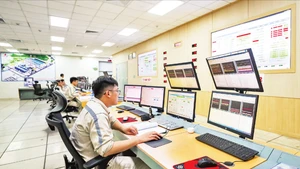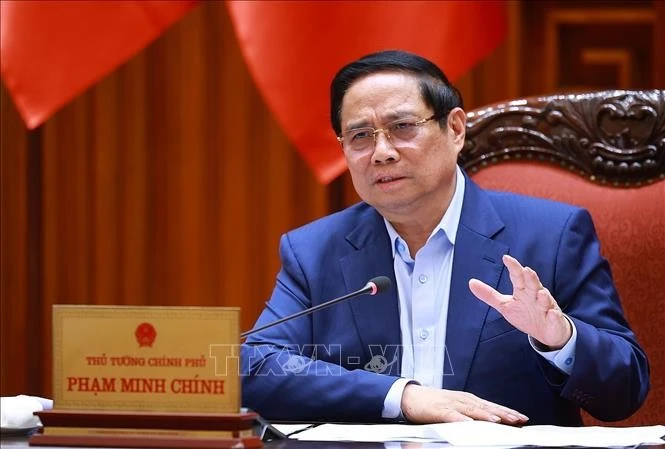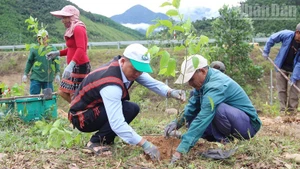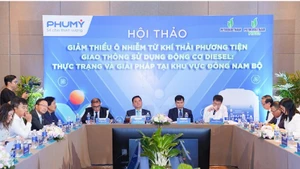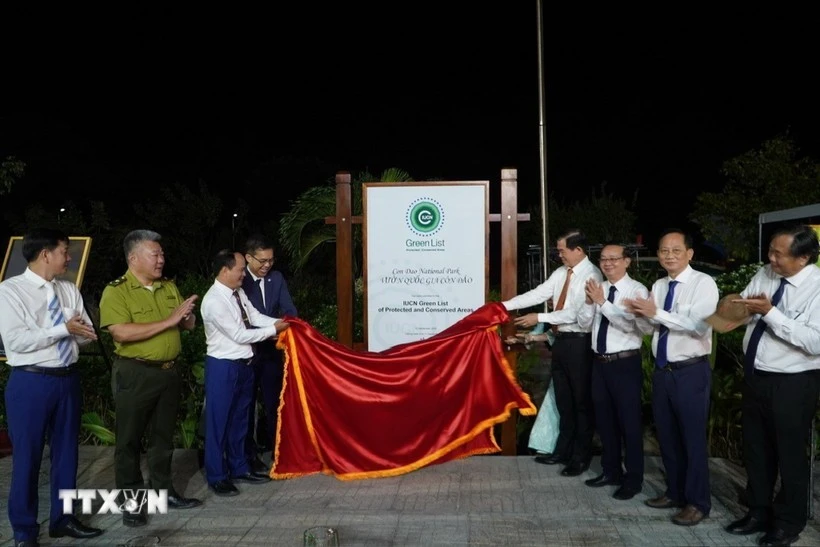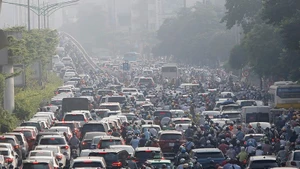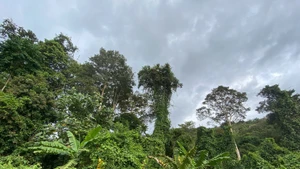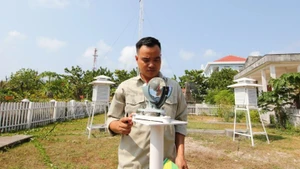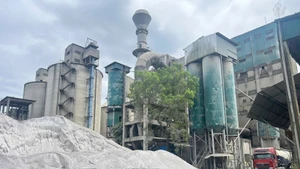Major impact on vehicles
Vehicle emissions have been identified as one of the leading causes of air pollution in Hanoi and Ho Chi Minh City (accounting for 56%). The emission of PM2.5 particles and volatile organic compounds (VOCs) mainly comes from diesel trucks and motorbikes, with VOCs from motorbikes accounting for up to 90%. According to data from Hanoi’s Department of Transport, as of April 2024, Hanoi has more than 8 million motor vehicles, including 1.1 million cars. About 72.58% of motorbikes in Hanoi have been in use for over 10 years.
For the first time, an air pollution control solution has been legislated. According to the Capital Law, a low emission zone is defined as an area in which polluting vehicles are restricted in order to improve air quality and protect public health.
Recently, a draft resolution on the criteria, conditions, procedures and processes for determining low emission zones has been put forward by the Hanoi People’s Committee for public consultation through the municipal government portal. According to the draft, a low emission zone is a limited area within the city where vehicles must meet strict emission standards. Vehicles that do not meet these standards will be restricted or required to pay fees.
The low emission zone is a completely new model, being regulated for the first time in Vietnam, and has a significant impact on vehicles, especially motorbikes, which has generated considerable public interest.
Nguyen Van Manh, a resident in Hoang Mai District, Hanoi, said: “The policy of establishing low emission zones to address traffic-related air pollution issues is very necessary. However, this needs to be accompanied by the development of public transport systems and solutions for people who use motorbikes as a means of income.”
Le Thi Nha, of Hoan Kiem District, Hanoi, also shared: “Our family lives in the Old Quarter, and, like many other residents, we travel by motorbike. In this area, because of the small alleys and streets, it’s very difficult to use public transport. It would be very difficult for our lives if motorbikes were completely banned.”
Dr Hoang Duong Tung, Chairman of the Vietnam Clean Air Network, supports the establishment of LEZs, which have been implemented by many countries. If this model is successfully implemented in Hanoi, it can potentially be expanded to other urban areas with high population density and large numbers of personal vehicles, such as Ho Chi Minh City and Vinh City.
“When implementing such zones, it’s necessary to clearly define whether the LEZ scope covers a single road or an interconnected network of roads, and there must be specific measurement indicators. Careful research is needed to avoid proposing unfeasible solutions without proper monitoring measures. More importantly, since restricting personal vehicles will directly affect many people’s lives, a specific roadmap is necessary,” Tung suggested.
 |
| Emissions from vehicles are one of the main causes of air pollution. (Photo: Hai Anh) |
Official legal framework
For the LEZ to become a reality, Hanoi still faces many challenges. According to Le Thanh Thuy, Deputy Head of Environmental Management at the Hanoi Department of Natural Resources and Environment, there are currently no emission standards or regulations for motorbikes and scooters in circulation, and there is no infrastructure for testing emissions of vehicles currently in use.
The network of air quality monitoring stations in Hanoi is also incomplete, so there is no regular, updated emission inventory data, especially from traffic emission sources, to serve as a basis for policy implementation assessment.
Hanoi is also facing issues with an underdeveloped public transport system. Currently, public transport in Hanoi relies mainly on inner-city bus routes, but this network does not have sufficient coverage and still has many limitations that prevent many residents from using these services.
Hanoi is a city with high population density, particularly in inner districts such as Ba Dinh, Dong Da, Cau Giay, Thanh Xuan, and Hoang Mai. There is a very large number of residents living deep in small alleys, and motorbikes remain their primary mode of transport.
According to many experts, for residents to accept giving up their personal vehicles, Hanoi needs to build an alternative transport system that is truly attractive, clean and convenient, because when public transport cannot meet mobility needs, requiring people to give up motorbikes will face strong opposition.
In addition, concerns about the high costs of green vehicles such as electric vehicles or hybrids are also a major barrier. Reality shows that the majority of residents currently have low to medium income levels. This presents a significant barrier to accessing alternative vehicles without reasonable support policies.
The reality outlined above demonstrates that implementing LEZs requires significant financial resources from both the government and the community. For the government, this entails funding to develop public transport infrastructure, along with incentive policies to encourage public awareness change. For the public, the cost of switching from older vehicles to electric vehicles or those meeting emission standards presents a considerable burden.
Meanwhile, transport businesses also face substantial pressure to upgrade their fleets, especially small enterprises already struggling with high operational costs. Without support measures such as tax exemptions, subsidies, or preferential loans, this policy risks creating inequalities and increasing the burden on vulnerable groups.
To green the transport system, the Hanoi People’s Committee recently approved a plan for developing a public transport system with buses using electric and green energy. The plan outlines a roadmap for transitioning to and developing electric and green energy buses in accordance with the schedule approved by the prime minister in 2022. The plan also proposes solutions to achieve a 100% electric and green energy bus fleet by 2035.
Currently, the Hanoi Department of Natural Resources and Environment is working to finalise the draft resolution to be submitted to the People’s Council in December 2024. If the resolution is approved, then starting from January 1, 2025, Hanoi will have an official legal framework outlining the necessary conditions and criteria, providing a basis for local authorities to assess their current situation and capabilities to develop technical documentation for low-emission zones.
Thuy added that competent agencies such as the Department of Natural Resources and Environment, the Department of Transport and the Department of Planning and Architecture will subsequently conduct a comprehensive evaluation of the conditions, criteria, and solutions based on practical circumstances and the execution capacity of the proposed areas.
